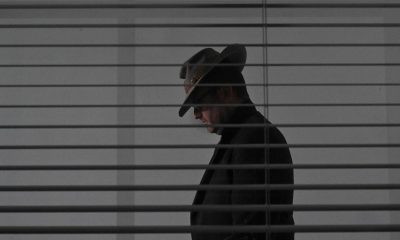Health
Covid-19 coronavirus: Superspreader – woman infects 71 people in 60 seconds in elevator: CDC study – New Zealand Herald
Asymptomatic woman did everything right still managed to cause a huge cluster.

VIRUS LATEST:There are now 560,000 deaths worldwide and 12.5m confirmed casesOne new case in New Zealand, says Ministry of HealthVirus can survive in the air for more than an hourMutant strain ‘six times’ more infectious, scientists say
One asymptomatic carrier rode an elevator alone, then 71 people got Covid-19.
She did everything right. She had no symptoms, but she self-quarantined anyway after travel. She stayed in her apartment. She ordered-in food. But she became patient zero in a 71-case cluster.
Intensive contact tracing is not just helping head-off Covid-19’s spread. It’s revealing just how crazy infectious the virus can be. A new study released by the US Centres for Disease Control (CDC) analysed the impact a single traveller with no symptoms can have. It also reveals the pitfalls of high-density living.
We know the coronavirus is mostly spread through droplets. We also know it can be carried through the air and lingers on surfaces. It’s a deadly arsenal of contagion.
But Covid-19’s most devastating weapon is unwitting asymptomatic carriers. It’s a recurring story. An enthusiastic nightclubber single-handedly causing a fresh lockdown in Seoul.
An energetic partygoer in California infected dozens of his family and friends. Now, evidence shows even careful, conscientious unknowing carriers can be the source of serious contagion.
The CDC study centres on a deep-dive contact tracing effort in Heilongjiang Province, China in mid-April. The province had not reported a new Covid-19 diagnosis since March 11.
On April 2 a man in the area suffered a serious stroke a known possible symptom of the disease but he hadn’t been diagnosed.
He was rushed to hospital and his three sons went with him and took turns staying by the man’s side. Between them, they unknowingly infected another 28 people including five nurses and a doctor.
Before being diagnosed, the stroke victim was taken to a second hospital to recuperate. There, he was the source of a further 20 infections. It was only then that the alarm was raised.
And it wasn’t because of the stroke victim. Another man (Patient B) had presented with Covid-19 symptoms. All of his close contacts were tested. They also proved positive one of them was the stroke victim.
Immediately, everyone the patient had been in contact with, or even close to while in the hospitals, was tested and put into lockdown. But for almost 50 of them, it was already too late. And some of these had passed the virus on even further.
Contact tracers were racing against time to find the source. The pandemic’s spread had to be halted. Was there a new, hidden outbreak already entrenched in the community?
Patient B had met the stroke victim and his sons at a party on March 29. But nobody else who attended tested positive. So where had he got it?
The city was not in lockdown. Small gatherings were allowed. Many businesses were open.
But contagion was usually through close contact. So they tested his girlfriend. She had it. Her daughter, who lived at home, also had it.
And he had visited them on March 26. Here the contact tracers hit a brick wall. None had travelled. None had contacts who had travelled. And no further cases of COVID could be linked to them. But the virus couldn’t just materialise out of thin air.
The contact tracers had conducted standard genome sequencing of the virus. It was quickly evident it was different to that already known to be in circulation.
That indicated it had come from overseas.
But every chain of contacts and associations among the sufferers came up blank. Nobody had been overseas or even knew someone who had been.
By April 9, the contact tracers were becoming desperate. So they called up the profiles of everybody living in the same residential apartment tower as the earliest known sufferers.
One, they realised, had recently travelled from the United States and she lived on the floor above the woman and her daughter.
A quick assessment revealed her to be well. And she’s been following self-isolation protocol to the letter. But a swab revealed she had Covid-19 antibodies.
Detailed questioning and movement tracking showed the women had not come in direct contact with each other. Which left just one possible source of contagion.
The lift that portion of the apartment block shared the asymptomatic traveller had used it to get to the apartment where she had self-isolated.
“Therefore, we believe A0

-

 General19 hours ago
General19 hours agoOsborne Park Football Club suspended for two years after Stephen Hawking costume controversy
-

 General21 hours ago
General21 hours agoMelbourne Cup five quick hits: Melham magic, Blake Shinn falls, and concern over blood from Half Yours’s mouth
-

 Noosa News22 hours ago
Noosa News22 hours agoFatal traffic crash, Cooloola Cove
-

 General18 hours ago
General18 hours agoAustralia warned of assassination attempts by regimes
